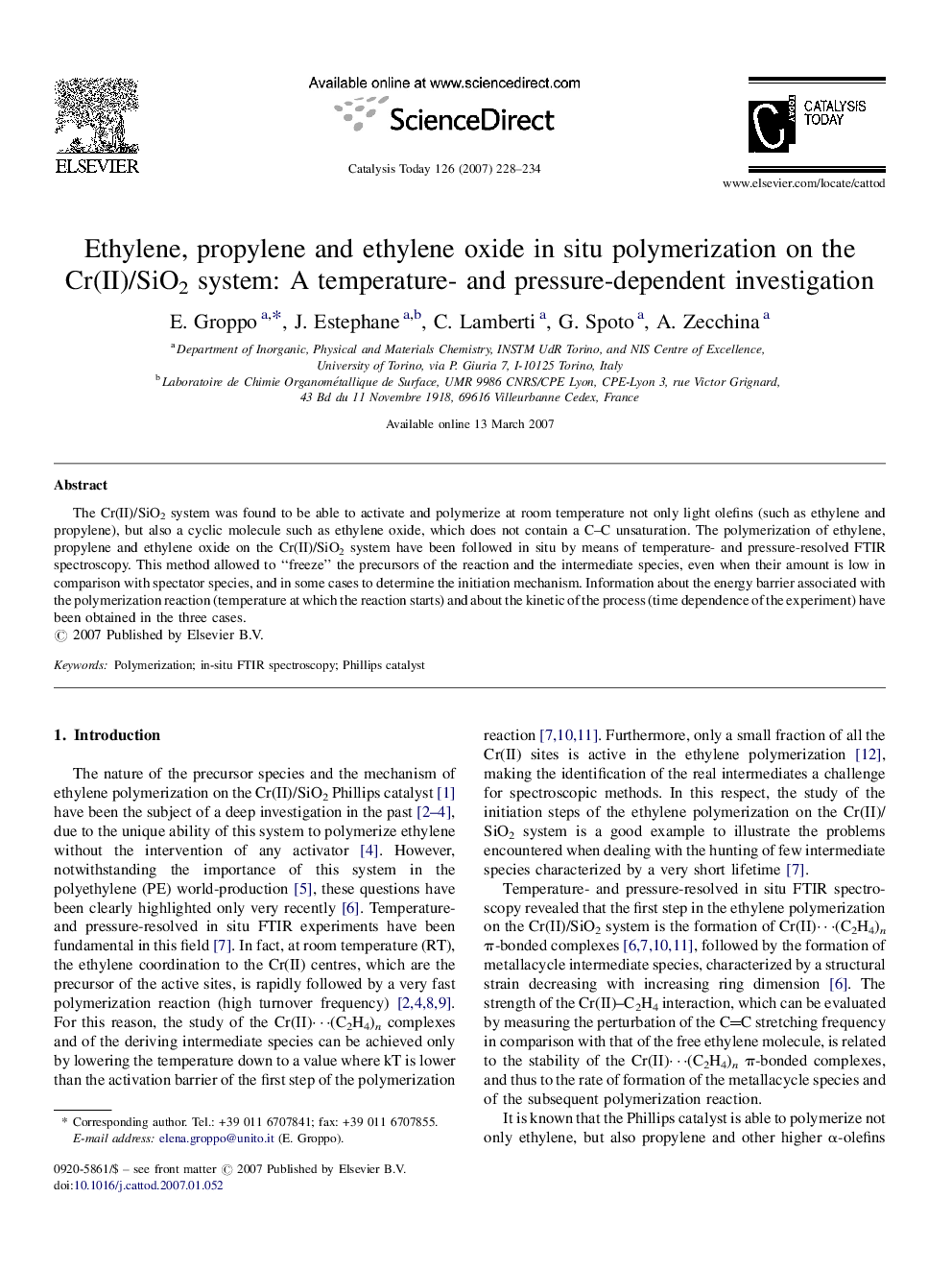| Article ID | Journal | Published Year | Pages | File Type |
|---|---|---|---|---|
| 57980 | Catalysis Today | 2007 | 7 Pages |
The Cr(II)/SiO2 system was found to be able to activate and polymerize at room temperature not only light olefins (such as ethylene and propylene), but also a cyclic molecule such as ethylene oxide, which does not contain a C–C unsaturation. The polymerization of ethylene, propylene and ethylene oxide on the Cr(II)/SiO2 system have been followed in situ by means of temperature- and pressure-resolved FTIR spectroscopy. This method allowed to “freeze” the precursors of the reaction and the intermediate species, even when their amount is low in comparison with spectator species, and in some cases to determine the initiation mechanism. Information about the energy barrier associated with the polymerization reaction (temperature at which the reaction starts) and about the kinetic of the process (time dependence of the experiment) have been obtained in the three cases.
